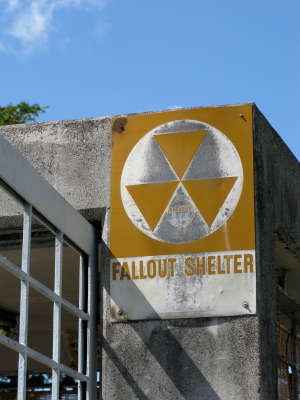Former nuclear bunker being used for self storage

The Ministry of Defence has sold off 10 nuclear bunkers in the last five years, one of which is being used for self storage, according to a recent Freedom of Information (FOI) request.
Between the end of World War 2 and the 1990s, the UK government built dozens of concrete bunkers in remote parts of country which were designed to enable the government to continue functioning in the event of a nuclear attack.
Since the threat of this has diminished with the end of the Cold War, the bunkers have gradually been sold off. Their design makes them especially secure locations for self storage.
Self storage in a nuclear bunker
The Inverness-based self storage company Self Storage 4U purchased the 1400 square foot bunker for a sum in the hundreds of thousands when the MOD sold it in 2008. Following a successful planning application to the Highland Council they now operate the facility for both outdoor container self storage on the land surrounding the bunker, and for storing goods inside the bunker itself.
The bunker is in a remote location called Fort George, 13 miles east of Inverness, and was built in 1993 to act as a secure communications centre. It is designed to withstand the effects of a nuclear strike in the surrounding area (although not a direct hit), meaning it must be one of the world’s most secure self storage facilities. Design features include being self-contained, with controlled access, and with its own power-generator and air-conditioning.
Unsurprisingly given it has all these security features, the company advertises this facility as providing ‘high security storage’. While it is very well secured against nuclear bomb threats, such high-level security may not be the top priority for all self storage customers; others might be more concerned about its remote location, making it a chore to visit, for example.
Indeed, the age in which British households need to consider a nuclear-proof storage solution has probably passed, perhaps making this option a bit over the top… But then again, with Iran and North Korea apparently doing everything they can to get the bomb, maybe you can never be too careful.
Bunker storage perfect for those with ‘a nervous disposition’
As the response to the FOI request stated, this isn’t the only bunker to have been sold in the last five years. In Perthshire a bunker built underneath Britain’s most high-security POW camp was sold. The Cultybraggan Camp was used during WW2 to hold some of the most high-ranking Nazis captured by British forces, before a nuclear bunker was completed on the same site in 1990. The bunker was designed to hold up to 150 people and came with a range of facilities, including its own telephone exchange, canteen, dormitories and a complete BBC studio, to keep the public informed if a nuclear war broke out.
The people it was designed to protect would have included politicians and high-ranking civil servants, so they could rebuild a post-apocalypse Scotland.
It was put on the market this month by its owners, The Comrie Development Trust, who bought the bunker when the MOD sold it in 2007 for £350,000. The agents have suggested bunker self storage could be among its possible uses, along with wine storage and data storage.
Andrew Black, of property consultants Carter Jonas, also recommended to the BBC that it would be perfect for someone with a ‘nervous disposition’ – probably what you need if you are inclined to think a nuclear bunker is necessary for self storage
2 Responses to “Former nuclear bunker being used for self storage”
Leave a Reply
Subscribe to This Blog
Get new blog posts sent to you by subscribing to RSS updates or to email updates.







This could be dangerous but you manage to take charge of it. How will be they safe?
As time goes by the self storage unit industries are also growing, there are also some new development for storage units from different storage sizes and also the climate storage unit system. Improving these facilities are always for the satisfaction of their customers.